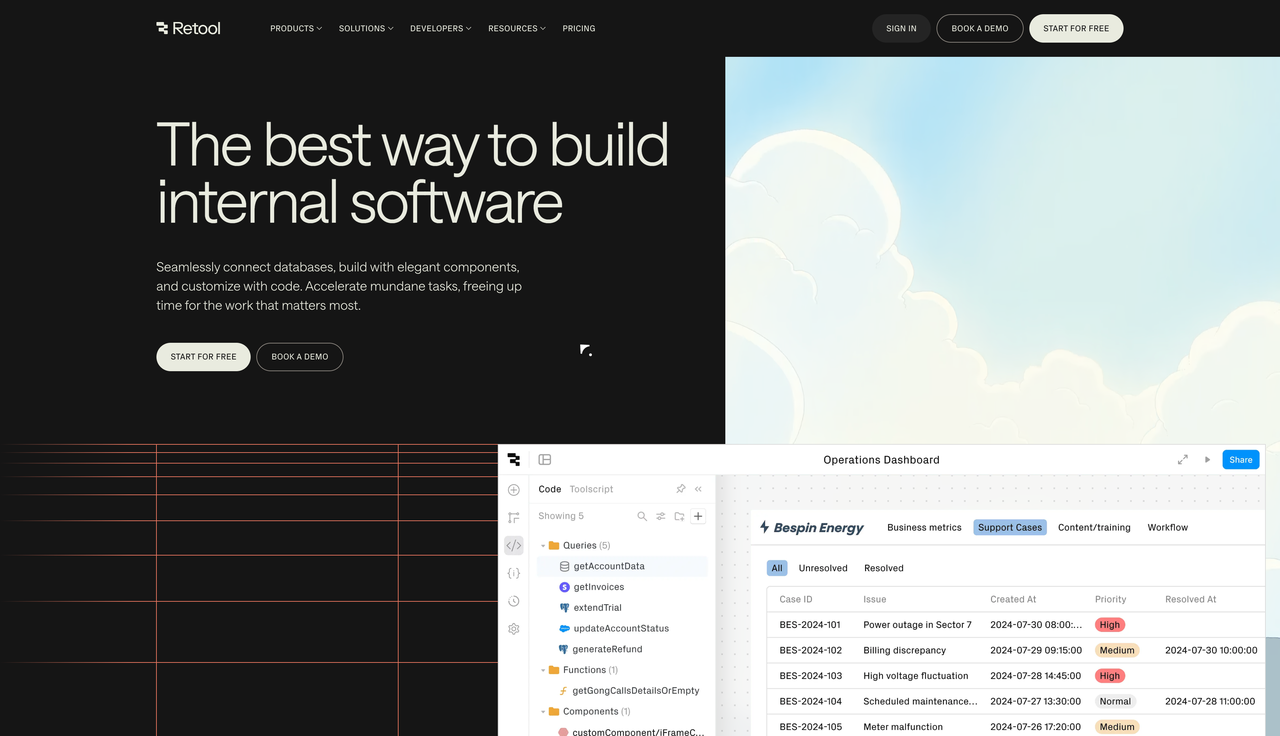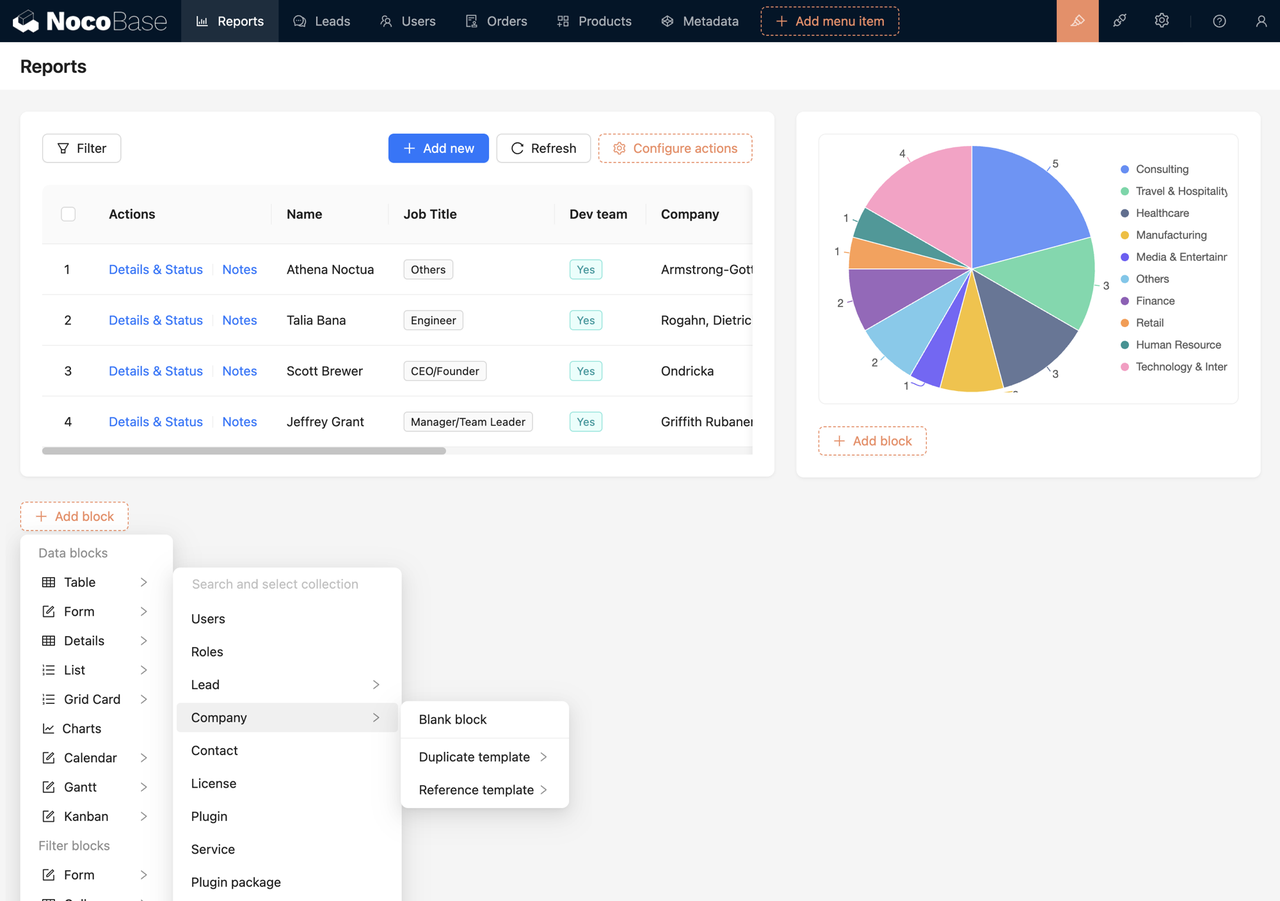The Best Open-Source Alternatives to Retool In 2025
 Lucy Zhang
Lucy Zhang
Originally published at The Best Open-Source Alternatives to Retool In 2025 - NocoBase.
Since its launch in 2017, Retool has quickly become a popular choice among developers.
It filled the gap for businesses needing to rapidly build internal tools. Traditional application development often consumes a lot of time and resources, especially for custom internal business applications. Retool offers a flexible platform where developers can integrate various databases, APIs, and third-party services into applications by using drag-and-drop components with a small amount of custom code, significantly reducing development time.
Today, this concept is well-known, and many products similar to Retool have appeared in the market.
In this article, we will focus on excellent open-source alternatives to Retool. I will introduce their unique capabilities and advantages, giving you more options when choosing a tool for accelerating development.
Why Choose Open-Source Alternatives to Retool?
Although Retool provides powerful features and integrations, open-source alternatives offer unique advantages, especially in terms of autonomy, flexibility, and cost control.
Autonomy
Retool offers a self-hosted version that allows companies to deploy it on their own infrastructure, such as within a VPN or VPC environment, ensuring high security and data compliance. However, this self-hosted version often incurs additional costs and requires complex setup processes.
Open-source alternatives usually allow complete control over every aspect of the system, whether it is the code, data, or other elements. By using open-source alternatives, companies have full control over all system details and can freely adjust and customize the system to meet their specific business needs.
Flexibility
Retool emphasizes flexibility for developers, allowing users to extend application functionality by writing JavaScript, SQL, and Python. It also offers a rich set of pre-built components to simplify routine development tasks.
However, for enterprises requiring deeper customization and integration, Retool’s closed-source nature may limit its usage in complex scenarios. In contrast, open-source alternatives offer greater extensibility, as companies can directly modify the code to fit their complex business logic and requirements.
No Subscription Fees
Retool’s SaaS version operates on a subscription model, with prices depending on the number of users and the required features. For example, its standard version starts at $10 per user per month, while enterprise features (such as self-hosting and enhanced security controls) require customized pricing. This subscription model is suitable for teams looking for quick deployment, but as a company scales, subscription costs can increase significantly.
In contrast, open-source alternatives usually do not have subscription fees, with businesses only covering hosting and maintenance costs. This makes open-source alternatives more advantageous for long-term cost control, especially for larger companies or development teams.
Recommended Open-Source Alternatives
Here are four open-source products on GitHub that have gained significant attention:
NocoBase: A highly scalable no-code development platform.
Budibase: An open-source low-code platform with flexible user interface design.
Appsmith: An open-source low-code platform focusing on front-end development.
Refine: A React-driven open-source development framework.
If you want to explore more open-source internal tools, check out our article published last month: Top 11 Open Source Internal Tools with the Most GitHub Stars
Now, let’s compare each of these four products with Retool.
NocoBase
GitHub Stars: 12.4k
Website: https://www.nocobase.com/
Documentation: https://docs.nocobase.com/
NocoBase is an open-source no-code development platform that is highly extensible and designed for companies needing to quickly build complex business applications. With a plugin architecture and powerful data permission controls, it can handle complex business scenarios and provides an automated workflow system to significantly improve development efficiency.
NocoBase serves as a foundational platform that saves developers time, allowing them to focus on more creative work rather than repetitive coding tasks.
Unique Features
Plugin Architecture with High Extensibility
NocoBase stands out due to its plugin architecture. Every feature is implemented through plugins, meaning users can add or remove functionalities according to their needs. This architecture allows NocoBase to be more extensible in scenarios requiring custom development. For example, businesses can create specialized plugins to extend NocoBase’s functionality, which is particularly useful when handling complex business logic.
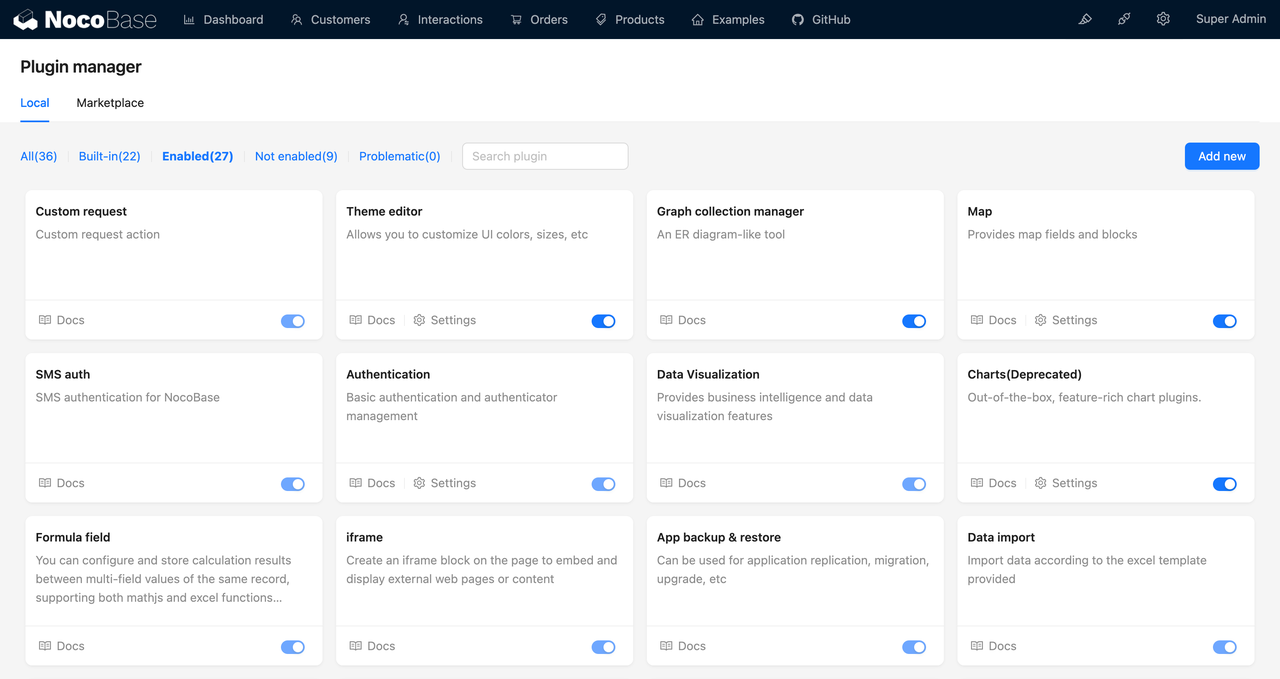
In contrast, although Retool’s component library is also quite rich, its extensibility mainly relies on the flexible configuration of built-in components and a small amount of code writing (such as JavaScript, SQL, and Python). While Retool excels in development speed and is suitable for quickly building simple to moderately complex internal tools, its closed-source nature may limit flexibility when faced with highly customized requirements.
Flexible Data Permission Controls
NocoBase offers flexible data permission controls, making it particularly suitable for teams with high data security requirements. Administrators can fine-tune access based on user roles and permissions, ensuring that only authorized users can view or modify specific data.
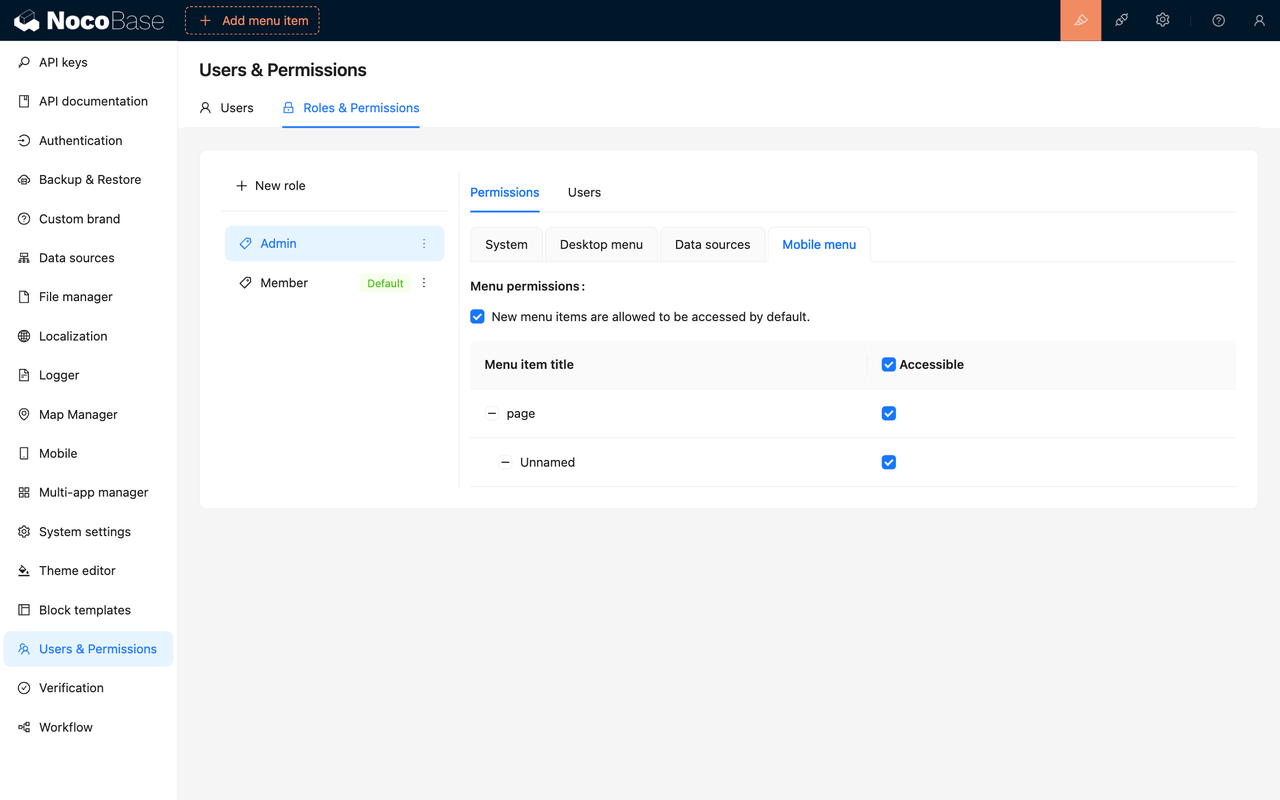
In comparison, Retool also provides features like RBAC and SSO, ensuring that companies can effectively manage user permissions across different roles. However, Retool’s permission control is more integrated within its platform ecosystem, whereas NocoBase, through its plugins, offers more diverse permission management capabilities. This makes NocoBase more suitable for companies with complex permission logic needs.
Automated Workflows for Efficiency
NocoBase’s automated workflows allow businesses to build and manage complex business processes through a visual interface. Whether it’s data synchronization across systems or complex approval workflows, NocoBase’s workflow engine automatically handles tasks, reducing manual work and minimizing errors.
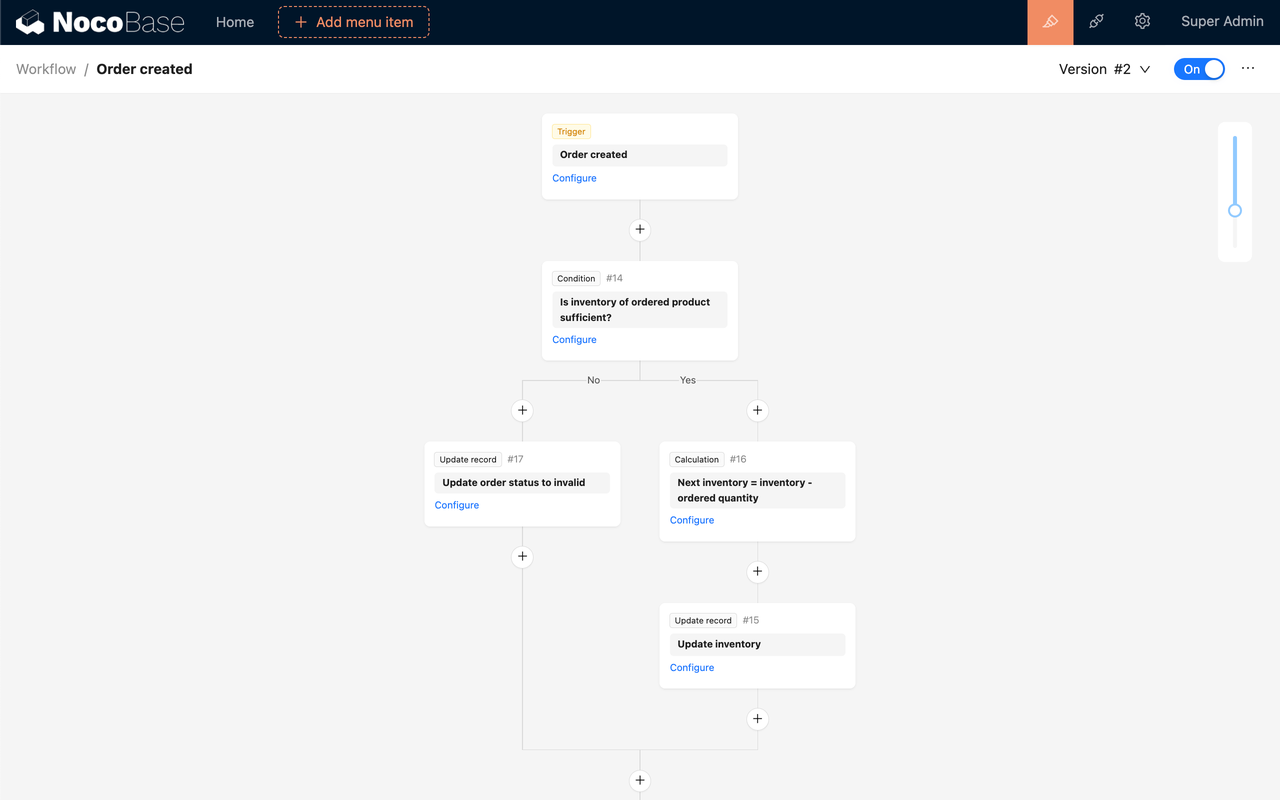
Although Retool also supports a certain degree of workflow automation, such as automating operations through APIs or built-in database queries, its main focus is on building user interfaces and data integration. Retool’s workflows rely more on developers writing code to implement them, making it suitable for teams that require simple task automation or have high developer involvement. In contrast, NocoBase’s visual workflows are better suited for companies looking to implement complex automation tasks through a no-code approach.
Recommended Use Cases
What is NocoBase more suitable for?
NocoBase is particularly well-suited for companies that need to handle complex business applications, have high requirements for data permission management, and seek extensive customization through plugins. For example, when a company needs to quickly build applications involving complex approval processes and role-based data permissions, NocoBase’s plugin architecture and workflow system provide exceptional flexibility and efficiency.
What is Retool more suitable for?
Retool is better suited for companies looking to quickly build internal tools that rely on third-party services and databases, particularly in scenarios that don’t require complex permission management or workflows. Retool’s strength lies in its rich integration capabilities and developer-friendly interface, allowing developers to quickly build applications with minimal code. It is ideal for companies that prioritize rapid development and iteration, and are comfortable relying on external platforms.
Appsmith
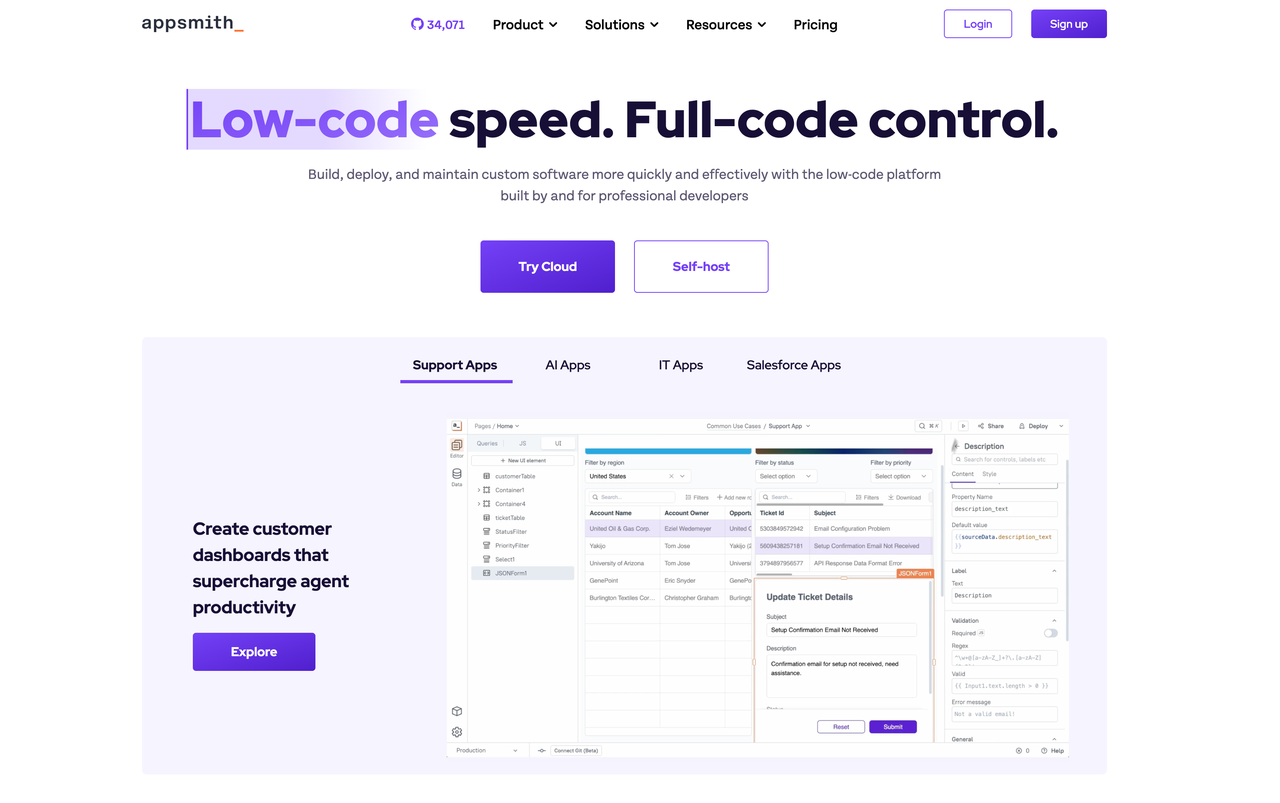
GitHub Stars: 34.2k
Website: https://www.appsmith.com/
Documentation: https://docs.appsmith.com/
Appsmith is an open-source low-code platform focused on front-end development. It provides extensive UI customization options and integrates with multiple data sources, making it ideal for teams working with complex business logic and API integrations.
💡Dig deeper: NocoBase vs. Appsmith: Which Open Source Low-Code Platform is Right for You?
Unique Features
Strong Front-End Customization
Appsmith’s greatest strength lies in its ability to provide extensive front-end customization. Developers can write JavaScript directly to control the application’s UI and business logic. Appsmith’s layout design, component interactions, and data manipulation can all be fine-tuned through code, making it highly suitable for development scenarios requiring flexible front-end customization.
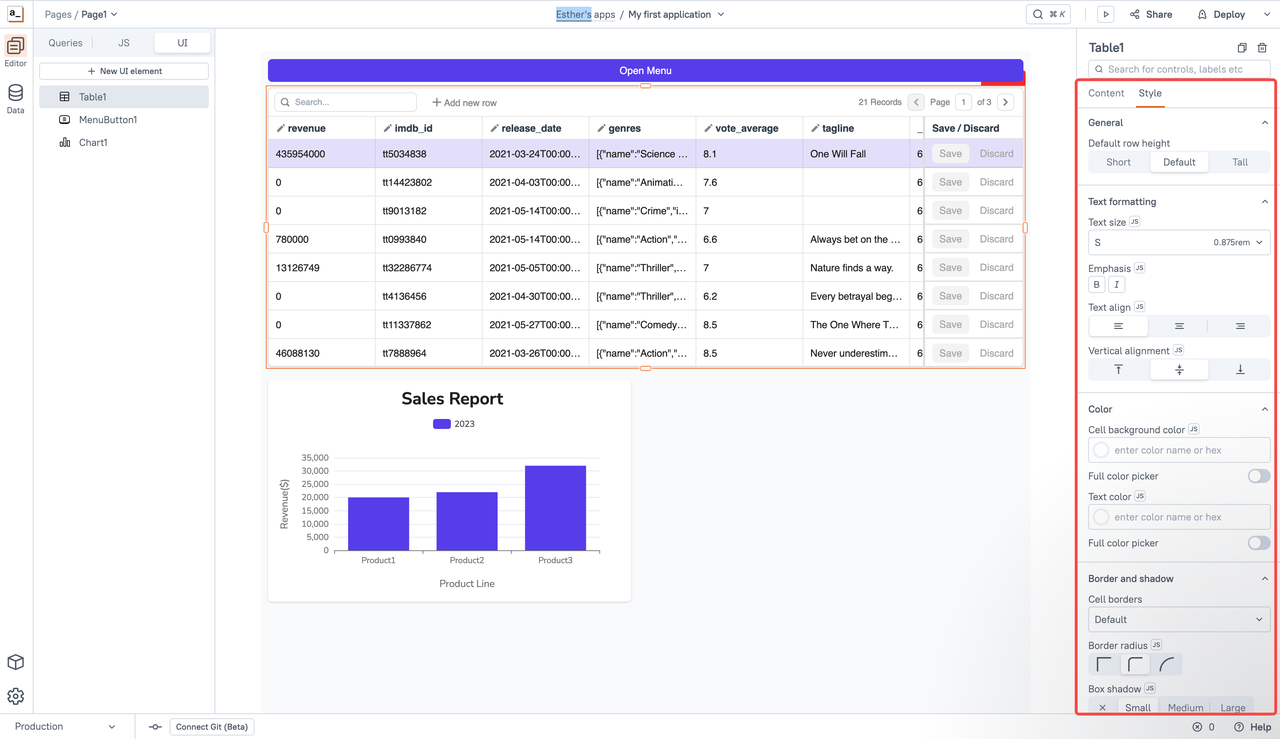
In comparison, Retool’s components also support a certain degree of customization, but its focus is more on quickly building interfaces through built-in components rather than fully customizing the front end. Therefore, Retool is more suitable for scenarios where there are lower UI customization requirements but a need to rapidly build internal tools. On the other hand, Appsmith is better suited for teams that want detailed control over the user interface and business logic.
Multi-Data Source Integration
Appsmith supports seamless integration with multiple data sources, including popular databases like MySQL, PostgreSQL, MongoDB, and third-party APIs and services. Developers can easily combine multiple data sources within a single application, making it ideal for scenarios requiring extensive data integration.
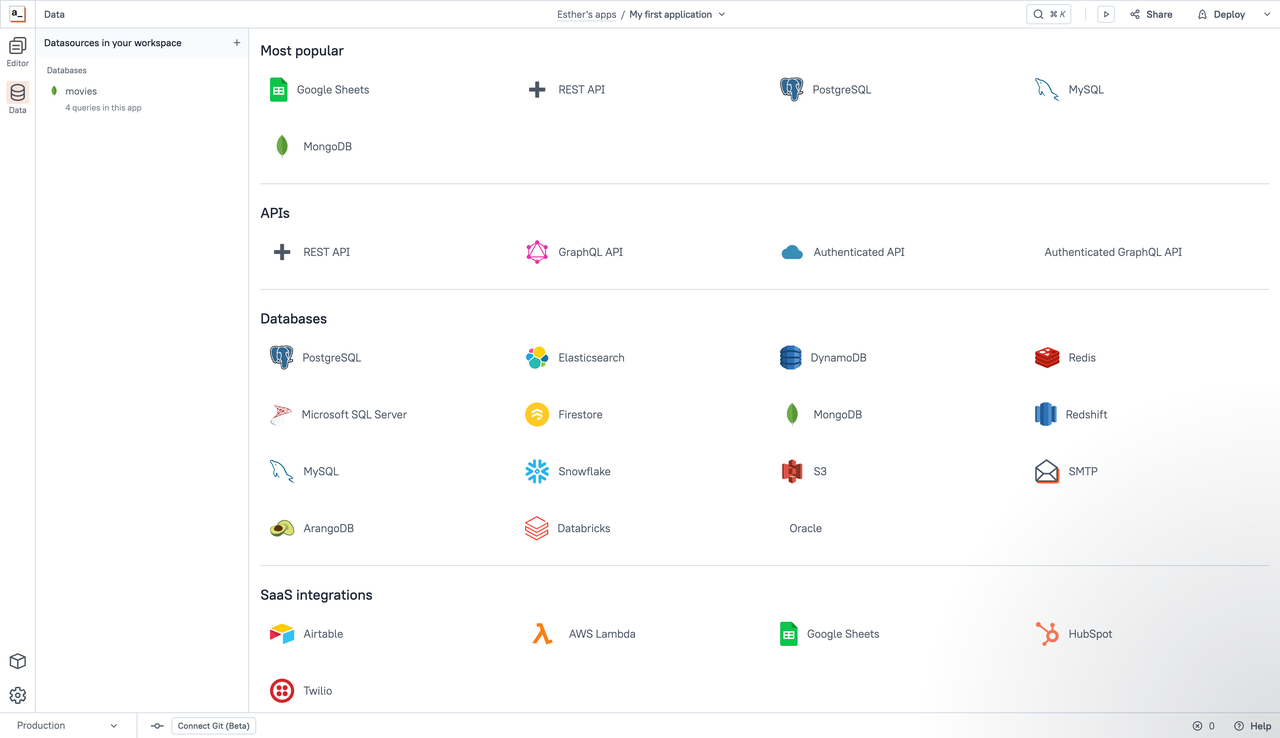
Retool also performs well in this regard, supporting integration with more than 70 data sources, including databases and APIs. However, Appsmith places more emphasis on highly customizing and fine-tuning these data sources during the development process, making it excel in scenarios involving complex data integration and front-end logic.
Recommended Use Cases
What is Appsmith more suitable for?
Appsmith is particularly well-suited for teams that need flexible front-end logic customization and focus on API integration. For companies that need to handle multiple data sources and perform highly customized operations, Appsmith provides powerful tools to help them quickly build complex business logic and user interfaces.
What is Retool more suitable for?
Retool is more suitable for teams looking to quickly build standard internal tools and emphasize rapid integration with multiple third-party services. Its strength lies in quickly building applications using built-in components and templates without needing much front-end customization. Retool is ideal for companies that don’t require complex UI customization but want to quickly build applications using low-code tools.
Refine
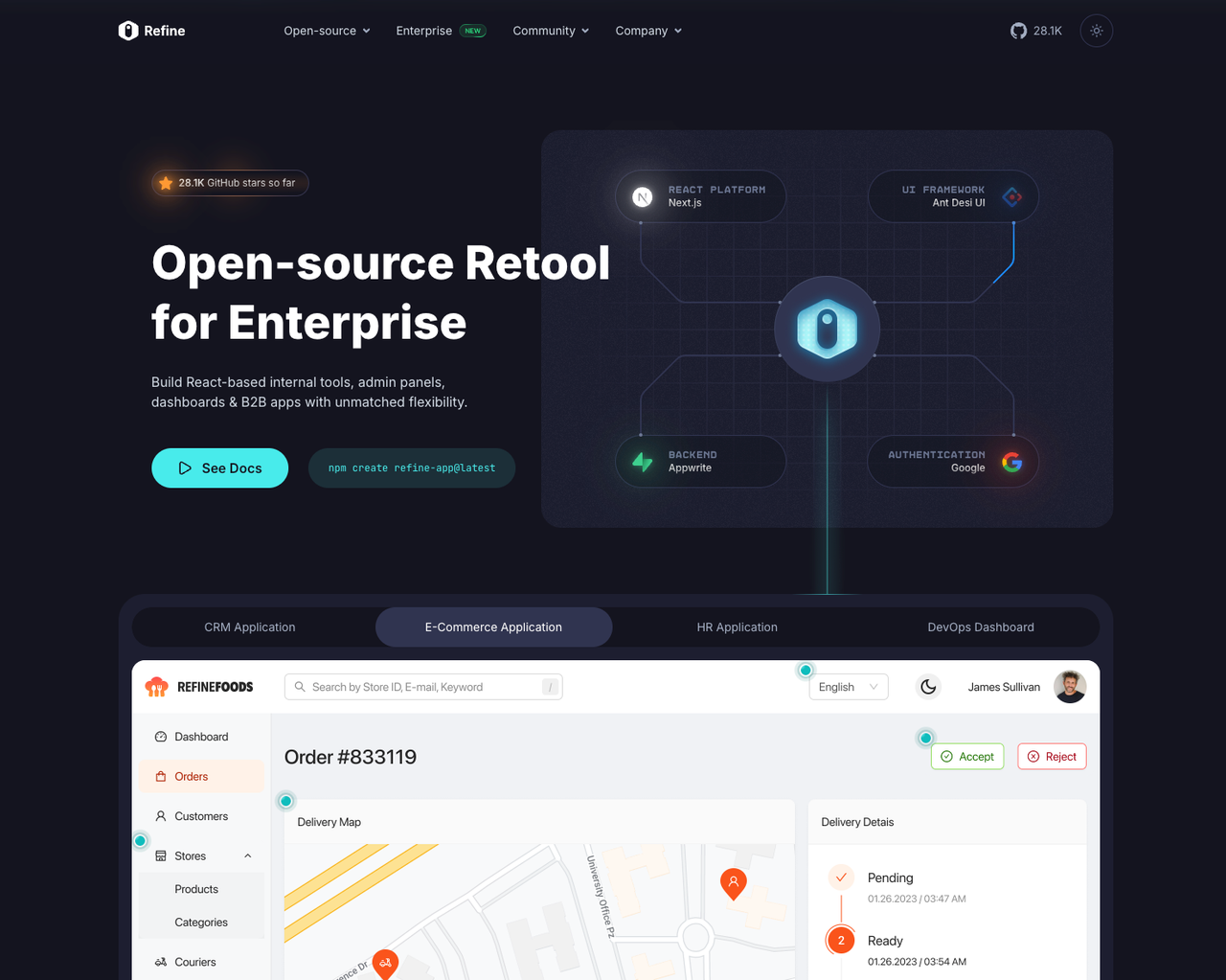
GitHub Stars: 28.1k
Website: https://refine.dev/
Documentation: https://refine.dev/docs/
Refine is an open-source low-code platform specifically designed for developers familiar with the React tech stack. It provides high flexibility and is especially suited for building data-intensive enterprise applications. Its deep integration with React allows developers to efficiently build complex applications.
💡Dig deeper: Open Source CRUD Development Tools: NocoBase vs Refine
Unique Features
Deep Integration with React
One of Refine’s main advantages is its deep integration with the React tech stack, making it particularly suitable for developers already familiar with React. Developers can use the React components and tools provided by Refine to quickly build complex enterprise-level applications while having full control over front-end logic and interface design.
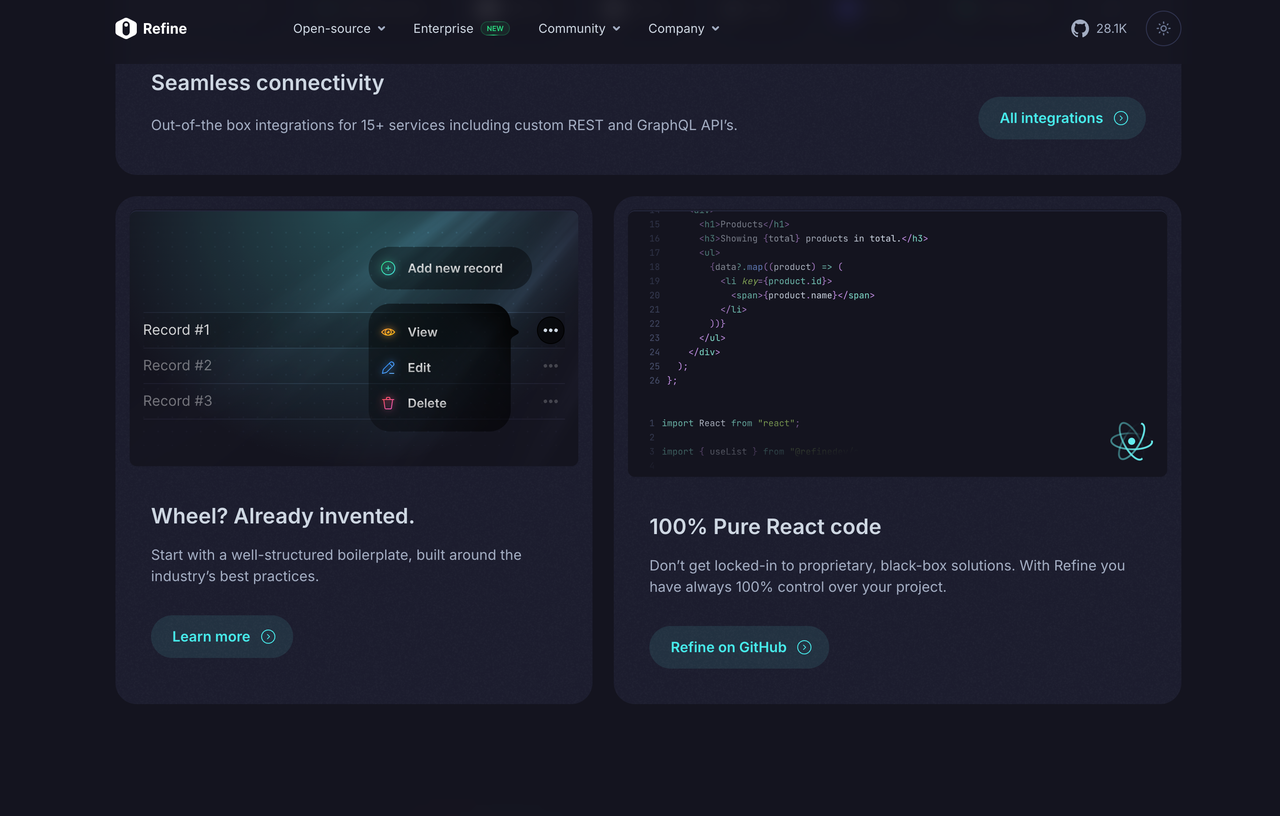
In comparison, although Retool’s component library is powerful, it is mainly aimed at teams that want to quickly build interfaces through a visual approach. Developers can perform some customization using JavaScript, SQL, etc., but its integration with React is not as direct or deep as Refine's. Therefore, Refine is more suitable for scenarios that require deep development based on React, while Retool is better suited for teams looking to quickly build internal tools using a low-code approach.
Rich Components for Data-Intensive Applications
Refine offers a rich library of components focused on enterprise-level application development, especially for handling data-intensive applications. Its pre-built CRUD (Create, Read, Update, Delete) components allow developers to manage large datasets efficiently, making it an excellent choice for companies that need to process large volumes of data or require real-time data updates.
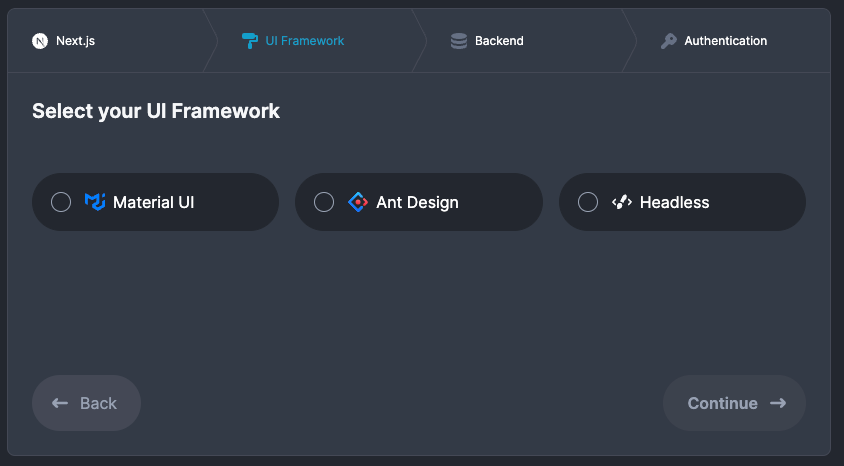
In comparison, Retool also offers more than 100 pre-built components and makes it very convenient to handle multi-data source integration and basic data operations (such as CRUD operations). However, Retool focuses more on quickly building user interfaces and integrating data, while Refine provides greater flexibility and control when dealing with complex data operations and front-end logic. This makes Refine particularly suitable for companies that need to handle large volumes of data.
Open-source Flexibility with High Customization Capabilities
Refine is fully open-source and provides a high level of customization. Developers can freely modify and extend its code to ensure the application fully meets business needs. Since Refine is deeply integrated with React, developers can leverage all tools and libraries within the React ecosystem to further enhance the functionality of their applications.
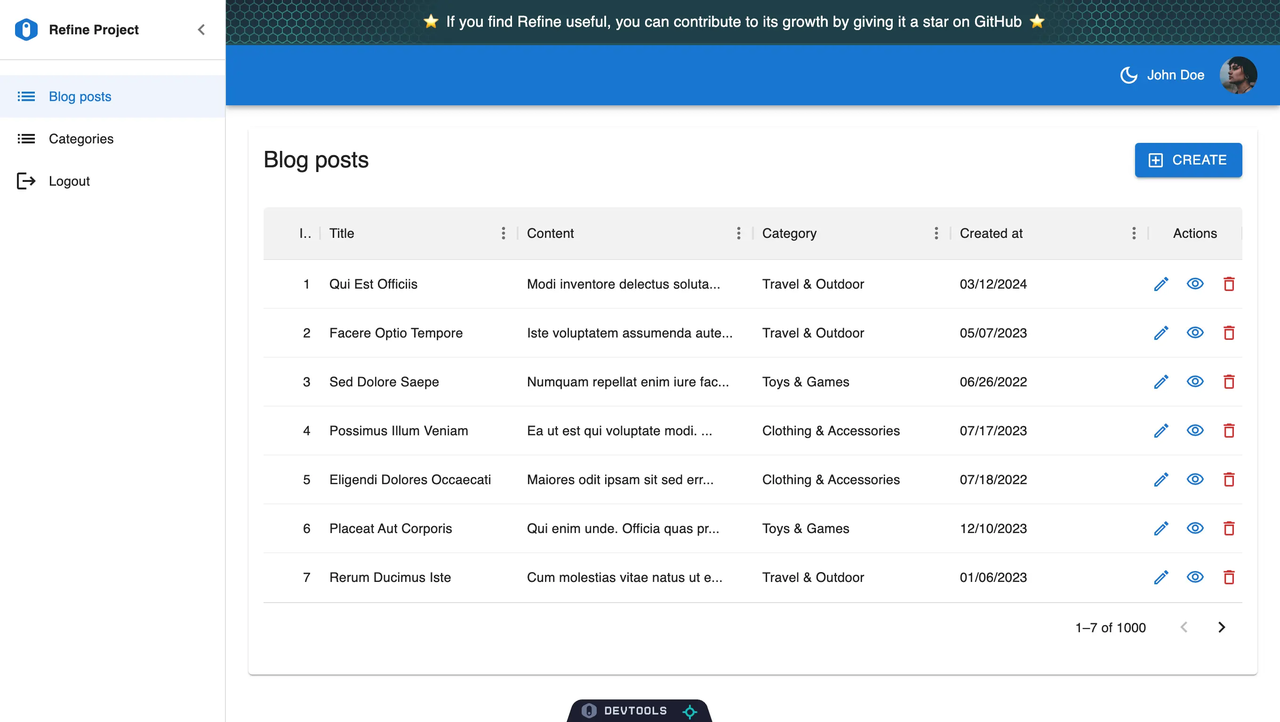
In contrast, Retool is only partially open-source. Although it offers a self-hosted version, most of its functionalities still depend on a closed-source infrastructure, limiting customization for companies in certain scenarios. Therefore, Refine is better suited for businesses that need full control and customization of their applications, while Retool is more appropriate for teams looking to quickly build standardized internal tools.
Recommended Use Cases
What is Refine more suitable for?
Refine is particularly well-suited for developers and teams familiar with the React tech stack who need to build complex, data-intensive applications. It offers seamless integration with React, a powerful component library, and highly flexible customization capabilities, enabling companies to quickly develop highly complex applications with real-time data processing capabilities.
What is Retool more suitable for?
Retool is more suitable for companies that need to quickly build internal tools and focus on integrating multiple data sources. By using a low-code approach, Retool helps developers reduce the amount of manual coding required. It is better suited for scenarios where there is not a high demand for UI flexibility, but existing components can be used to quickly build tools.
Budibase
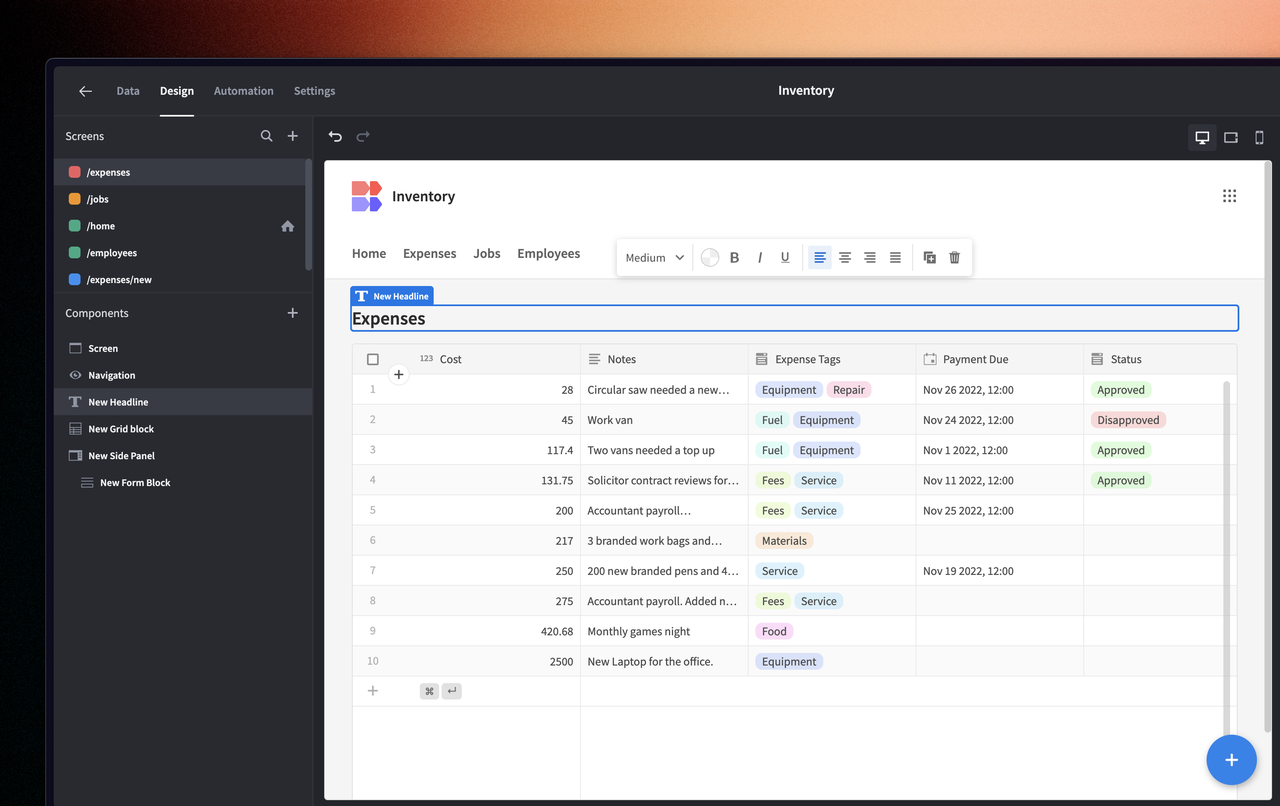
GitHub Stars: 22.5k
Website: https://budibase.com/
Documentation: https://docs.budibase.com/
Budibase is an open-source low-code platform that offers flexible user interface design and rapid data integration. With its extensive component library and strong support from the open-source community, Budibase provides powerful features for teams looking to customize internal applications, particularly for businesses with high UI design requirements.
Unique Features
Rich Components with Quick Data Integration
Budibase has a rich component library that allows users to quickly pull data from multiple databases and APIs. It supports popular databases like MySQL, PostgreSQL, and MongoDB. While Retool also integrates these databases, Budibase emphasizes community contributions, allowing users to create or extend components freely. This open-source flexibility is something Retool lacks, particularly for businesses that need to deeply customize data display or operation logic.
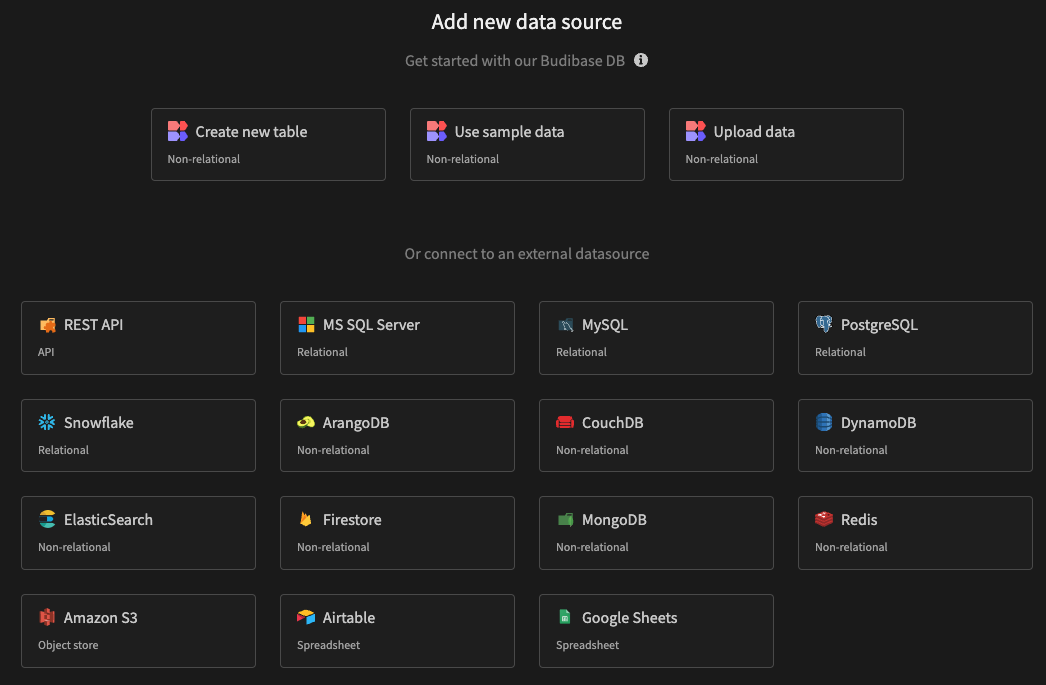
In comparison, Retool offers more than 100 pre-built components, helping developers quickly build application interfaces. However, since Retool is closed-source, the customization and expansion of its components rely more on officially supported libraries rather than a community-driven ecosystem. Therefore, for scenarios that require more custom components or non-standard functionalities, Budibase’s open-source community and component extensibility may be a better choice.
Flexible Page Layout Design
Budibase’s page layout flexibility is another advantage. Users can drag and drop components to adjust layouts, making it easy to customize application interfaces. This is particularly useful for businesses that need complex or personalized application interfaces.
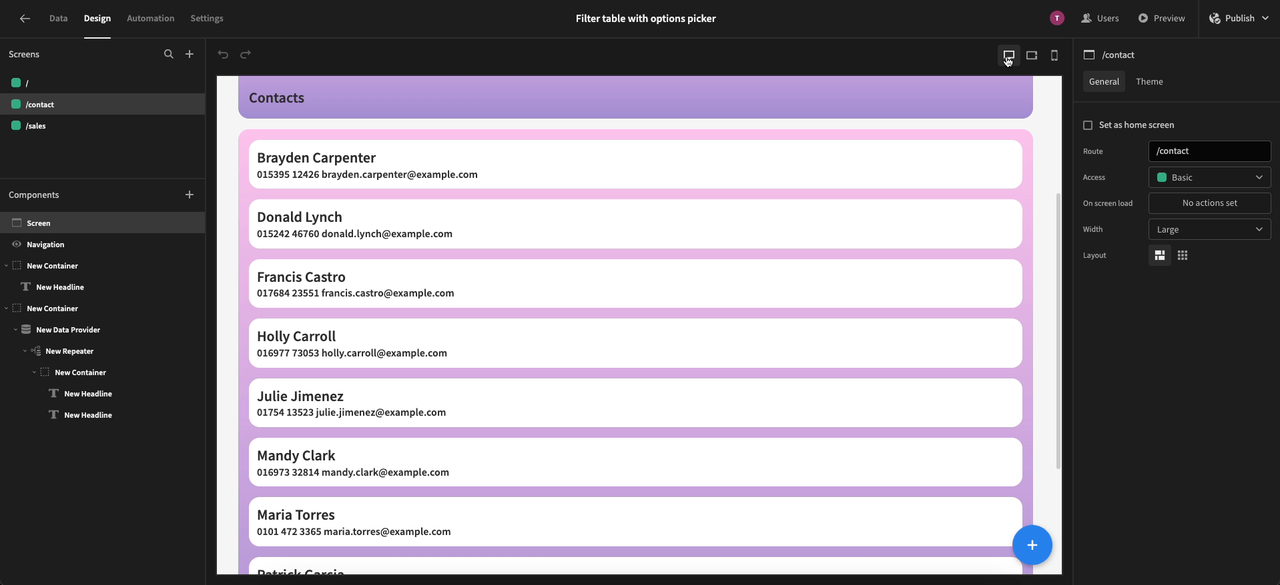
Retool’s UI design is relatively simple, focusing on rapid construction and standardized interfaces. While it does support a certain degree of layout customization, it primarily relies on pre-set components and layout methods. Therefore, Budibase is better suited for teams that have higher demands for interface design and require flexible layout options.
Active Open-Source Community Support
Budibase has an active open-source community, which means users can get support, plugins, and extended functionality from the community. Unlike Retool, which relies on enterprise support, Budibase’s community-driven model allows users to contribute to and improve the platform.

Although Retool offers excellent technical support and documentation, its closed-source nature means that users’ ability to extend the platform relies more on official updates and support. Therefore, for teams that wish to contribute to platform improvements and depend on long-term community support, Budibase is a very suitable choice.
Recommended Use Cases
What is Budibase more suitable for? Budibase is particularly well-suited for companies that need to quickly build internal applications and have high requirements for UI flexibility. Its rich component library, flexible page layout design, and strong community support make it an ideal platform for developing complex interfaces or custom-feature applications.
What is Retool more suitable for? Retool is more suitable for teams that need to quickly build standard internal tools and want to accelerate development by seamlessly integrating with third-party services and databases. Its pre-built component library and simple interface design are ideal for scenarios that don’t require much customization. Additionally, its closed-source structure is suited for users who need strong enterprise-level support.
Conclusion
In short, it’s essential to choose an open-source alternative that fits your business needs. Let me briefly summarize the key features and ideal use cases for these four products:
NocoBase: Best for companies dealing with complex business processes and data permission management. NocoBase’s plugin architecture offers extensive customization, making it suitable for handling complex data permissions and automated workflows efficiently.
Appsmith: Suitable for teams focusing on front-end customization and API integration. Its multi-data-source integration and extensive front-end customization capabilities are great for handling complex external services and data integrations.
Refine: Best for developers working with React and building data-intensive applications. Refine’s deep React integration and rich component library make it perfect for handling large datasets in enterprise applications.
Budibase: Ideal for businesses that need to quickly build internal applications with a high degree of UI flexibility. Budibase’s strong community support and page layout flexibility make it perfect for developing custom-designed applications.
Each tool offers unique advantages based on different technical features, from data permission management and front-end logic customization to plugin extensibility.
The key for businesses is to choose the tool that best fits their actual business scenarios.
Related reading:
Subscribe to my newsletter
Read articles from Lucy Zhang directly inside your inbox. Subscribe to the newsletter, and don't miss out.
Written by

